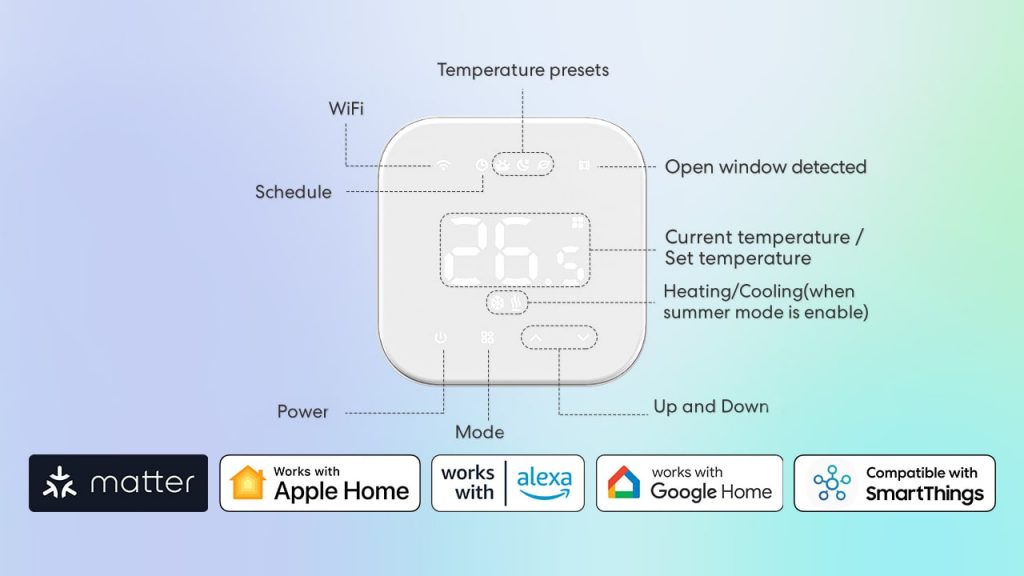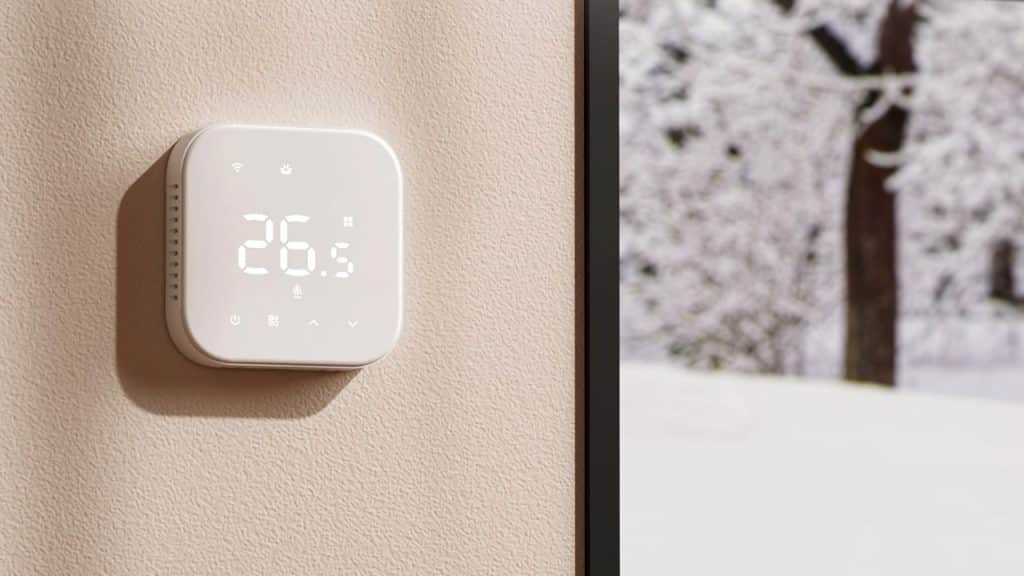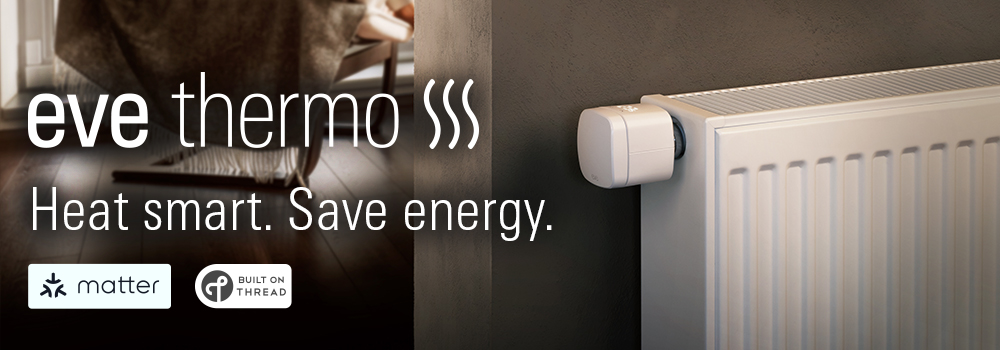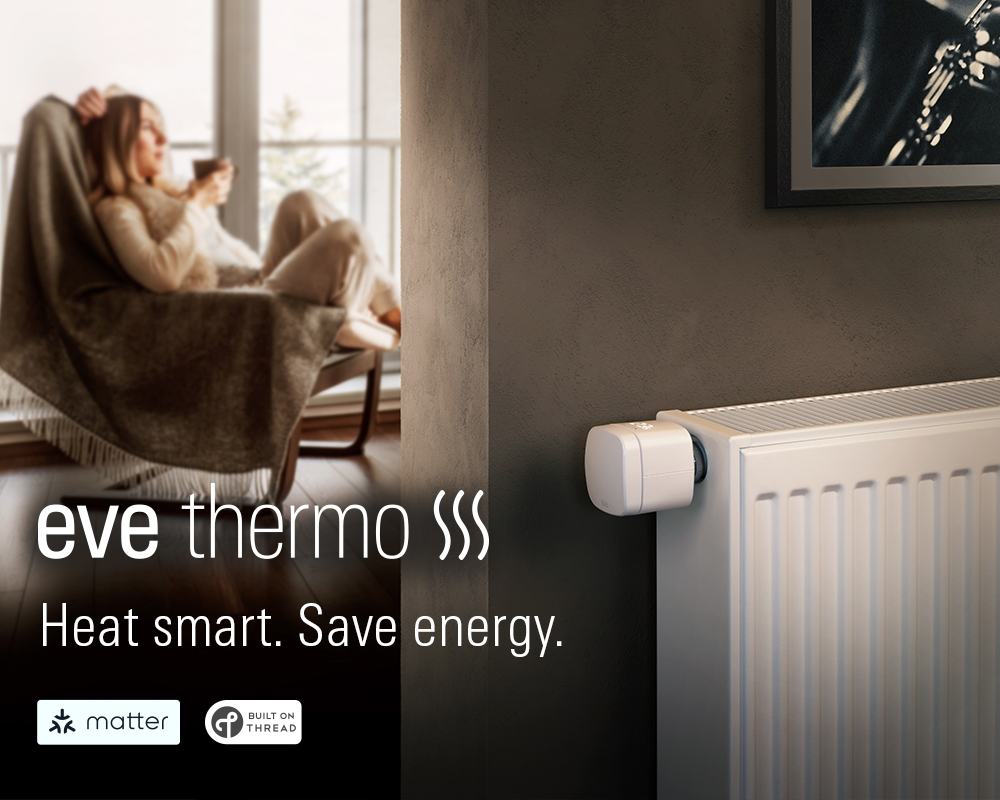Chinese manufacturer Meross (link) has launched a Matter-enabled wall thermostat for the European market. In addition to the US version for electric baseboard heating (MTS215 US) and the EU model for electric underfloor heating (MTS215 EU), the Smart Wi-Fi Thermostat MTS215B EU is designed for water-based heating systems.
Suitable for Boilers and Hydronic Floor Heating
The in-wall thermostat replaces an existing wall controller and manages gas boilers or hydronic floor heating systems, as long as they can be controlled via 230 volts. It connects to Matter platforms such as Amazon Alexa, Google Home, or SmartThings through the home’s Wi-Fi network (Matter over Wi-Fi) on the 2.4 GHz band. The 5 GHz band is not supported.

Installation requires a flush-mounted wall box with a neutral wire. A compatibility check available online (link) provides initial guidance on whether an existing heating system can be used. Since installation involves working on the 230-volt mains, inexperienced users should consult a qualified electrician. Attempting installation without proper knowledge can be dangerous and may damage the heating system.
Comprehensive Feature Set
The MTS215B EU comes in either black or white. Its glass front features touch-sensitive controls and an adjustable backlight, allowing separate brightness settings for standby and active operation. A built-in sensor detects temperature drops during ventilation and automatically pauses heating for 15 minutes. Also included in the box is a wired external sensor, which can be placed on the floor to measure temperature more accurately and improve regulation.
Through the Meross app, users can set daily schedules with customized temperature levels for specific times—something that Matter ecosystems like Apple Home or Google Home do not yet support. Homey Pro and Home Assistant are among the few exceptions that already offer such functionality.
Share this information:


